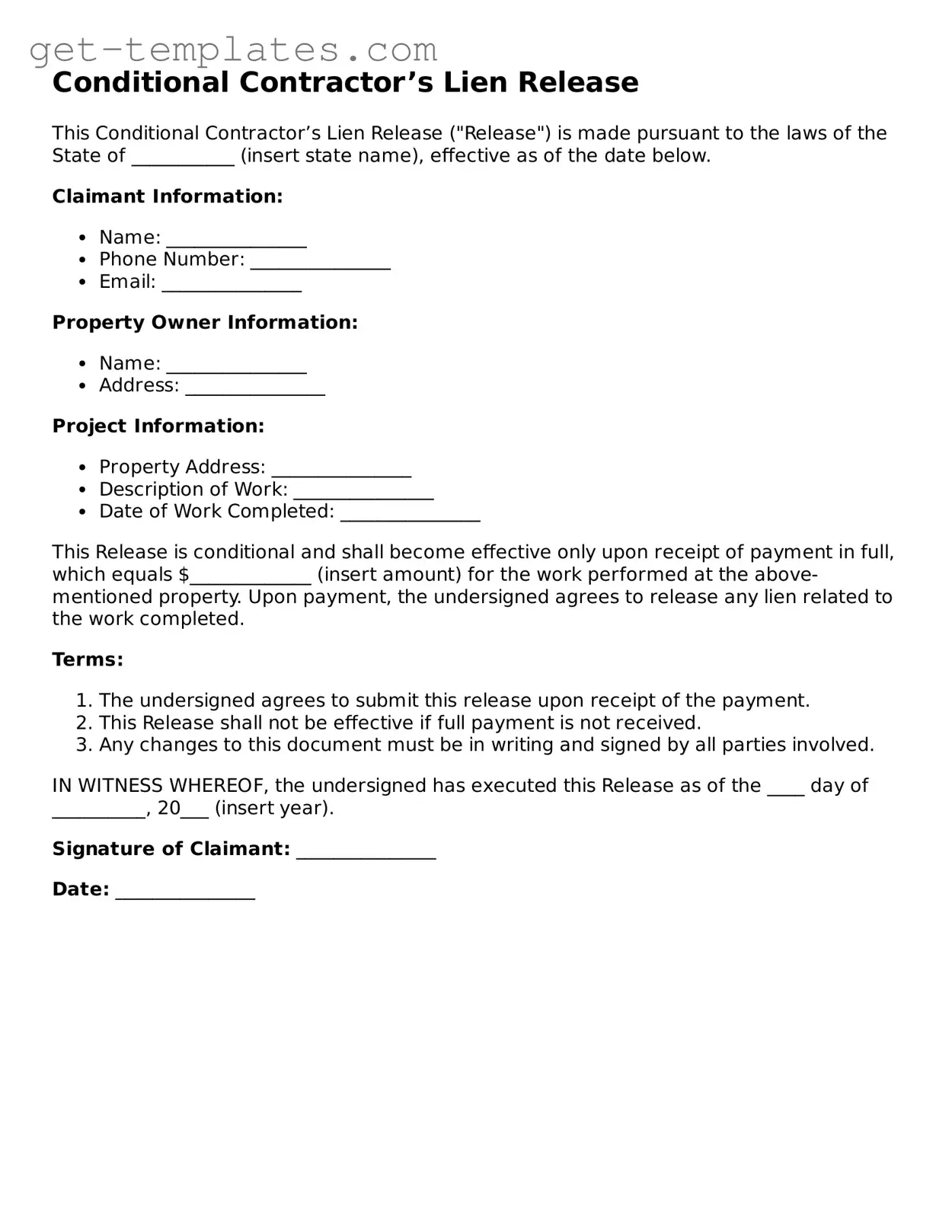Conditional Contractor’s Lien Release
This Conditional Contractor’s Lien Release ("Release") is made pursuant to the laws of the State of ___________ (insert state name), effective as of the date below.
Claimant Information:
- Name: _______________
- Phone Number: _______________
- Email: _______________
Property Owner Information:
- Name: _______________
- Address: _______________
Project Information:
- Property Address: _______________
- Description of Work: _______________
- Date of Work Completed: _______________
This Release is conditional and shall become effective only upon receipt of payment in full, which equals $_____________ (insert amount) for the work performed at the above-mentioned property. Upon payment, the undersigned agrees to release any lien related to the work completed.
Terms:
- The undersigned agrees to submit this release upon receipt of the payment.
- This Release shall not be effective if full payment is not received.
- Any changes to this document must be in writing and signed by all parties involved.
IN WITNESS WHEREOF, the undersigned has executed this Release as of the ____ day of __________, 20___ (insert year).
Signature of Claimant: _______________
Date: _______________
